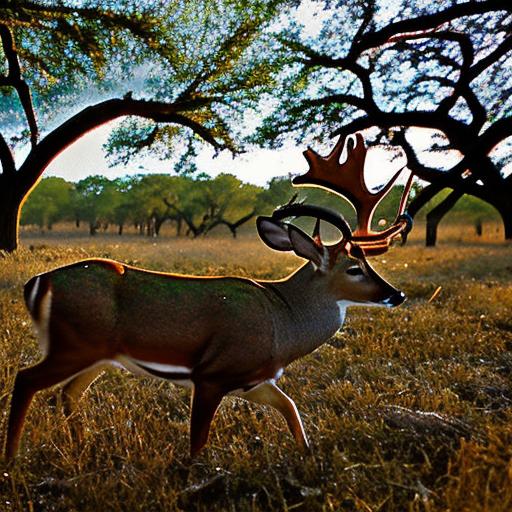Your cart is currently empty!

diy texas deer hunts

DIY Texas deer hunts have become increasingly popular among hunters in recent years. This type of hunt allows hunters to plan and execute their own hunting trips without the assistance of a guide or outfitter. It offers a sense of adventure and independence that many hunters find appealing. In this blog post, we will provide you with all the information you need to plan and execute a successful DIY Texas deer hunt.
Key Takeaways
- DIY Texas deer hunts can be a rewarding and cost-effective way to hunt.
- Planning and preparation are key to a successful DIY Texas deer hunt.
- Essential gear includes a reliable firearm, appropriate clothing, and scent control products.
- Scouting for deer involves identifying food sources, water sources, and bedding areas.
- Hunting techniques include using calls, scent lures, and tree stands for a better vantage point.
Planning Your DIY Texas Deer Hunt: Tips and Tricks
Before embarking on your DIY Texas deer hunt, it is important to do your research and plan accordingly. Start by familiarizing yourself with the hunting regulations and permits required in the area you plan to hunt. Each county in Texas has its own set of rules and regulations, so be sure to check with the local wildlife department for specific information.
Choosing the right hunting location is crucial for a successful DIY Texas deer hunt. Look for areas with a healthy deer population and good habitat. Public hunting lands, such as national forests and wildlife management areas, are great options for DIY hunters. These areas often have designated hunting zones and offer affordable access to prime hunting grounds.
Deciding on the best time of year to hunt is another important factor to consider. The peak of the rut, when bucks are most active and aggressive, is typically the most popular time for deer hunting in Texas. However, early season hunts can also be productive, as deer are still patternable and not yet pressured by other hunters.
Finding affordable lodging is another key aspect of planning your DIY Texas deer hunt. Look for campgrounds or cabins near your hunting area, or consider staying in a nearby town and commuting to your hunting spot each day. Additionally, many public hunting lands offer primitive camping options for hunters.
Essential Gear for a Successful DIY Texas Deer Hunt
Having the right gear is essential for a successful DIY Texas deer hunt. Start with a reliable firearm and ammunition that is appropriate for deer hunting. Bolt-action rifles in calibers such as .270 Winchester, .30-06 Springfield, or .308 Winchester are popular choices among Texas deer hunters. Make sure to practice shooting and become familiar with your firearm before heading out into the field.
When it comes to clothing and footwear, choose items that are comfortable, durable, and suitable for the weather conditions you will be hunting in. Layering is key, as temperatures can vary greatly throughout the day. Opt for camouflage patterns that blend well with the natural surroundings.
In addition to firearms and clothing, there are several hunting accessories that can enhance your DIY Texas deer hunt. A good pair of binoculars is essential for spotting deer from a distance. A rangefinder can help you accurately judge distances when taking shots. A backpack or daypack is useful for carrying essential items such as water, snacks, and extra ammunition.
Scouting for Deer: Finding the Best Hunting Spots in Texas
Scouting is a crucial step in preparing for your DIY Texas deer hunt. Before your hunt, spend time in the field observing deer behavior and identifying potential hunting spots. Look for signs of deer activity such as tracks, rubs, scrapes, and droppings.
Trail cameras can be a valuable tool for scouting deer. Set up cameras in strategic locations to capture images of deer movement. This will give you valuable information about the size and number of deer in the area, as well as their patterns and habits.
When choosing a hunting spot, look for areas with good cover, food sources, and water nearby. Deer are creatures of habit and tend to follow established travel routes between bedding areas and feeding areas. Look for funnels or pinch points where deer are likely to pass through.
Hunting Techniques for DIY Texas Deer Hunts
There are several hunting techniques that can be effective for DIY Texas deer hunts. Stand hunting involves sitting in a tree stand or ground blind and waiting for deer to come within range. This technique is particularly effective during the rut when bucks are actively searching for does.
Spot-and-stalk hunting involves actively moving through the hunting area, looking for deer and getting within shooting range. This technique requires stealth and patience, as you must be able to spot deer before they spot you.
Deer calling can be a useful technique for attracting deer to your hunting area. Grunt calls, rattling antlers, and doe bleats can all be effective in different situations. Practice using these calls before your hunt to ensure you are comfortable and proficient.
Using decoys can also be an effective strategy for luring deer into shooting range. Set up a realistic-looking decoy near your hunting spot and use it to attract curious deer. Be sure to position yourself downwind of the decoy to avoid alerting deer to your presence.
Safety Tips for DIY Texas Deer Hunts
Safety should always be a top priority when participating in any type of hunting activity. When it comes to firearms, always treat them as if they are loaded and never point them at anything you do not intend to shoot. Be aware of your surroundings and know what is beyond your target before taking a shot.
When hunting alone, it is important to let someone know where you will be and when you expect to return. Carry a cell phone with you in case of emergencies, but be aware that reception may be limited in remote areas. It is also a good idea to carry a basic first aid kit with you in case of minor injuries.
In the field, be aware of other hunters in the area and always wear blaze orange clothing to make yourself visible. Avoid crossing fences or other obstacles with a loaded firearm, and never climb into or out of a tree stand with a loaded firearm.
Processing Your Deer: DIY Butchering and Meat Preparation
Once you have successfully harvested a deer, it is important to properly process and store the meat. Start by field dressing the deer as soon as possible to remove the internal organs and cool the meat. This can be done in the field or back at camp, depending on your preference.
To butcher the deer, start by removing the quarters and backstraps. Use a sharp knife to carefully separate the meat from the bone. Trim away any excess fat or connective tissue. You can also save the ribs for smoking or slow cooking.
Once the meat is butchered, it can be packaged and stored in a freezer for later use. Vacuum-sealed bags are ideal for preserving the quality of the meat. Label each package with the date and cut of meat for easy identification.
When it comes to cooking venison, there are countless delicious recipes to try. Venison can be prepared in a variety of ways, including grilling, roasting, stewing, and sautéing. Experiment with different seasonings and marinades to enhance the flavor of the meat.
DIY Texas Deer Hunts for Beginners: Getting Started
If you are new to hunting or have never participated in a DIY Texas deer hunt before, there are a few tips to keep in mind. Start by familiarizing yourself with hunting regulations and safety guidelines. Take a hunter education course if you have not already done so.
When choosing hunting gear, opt for quality items that fit your budget. It is not necessary to invest in top-of-the-line equipment when starting out. Focus on essentials such as a reliable firearm, appropriate clothing, and basic accessories.
On your first DIY Texas deer hunt, it is important to manage your expectations. Success is not guaranteed, and it may take time to learn the ropes and become proficient at hunting. Enjoy the experience and take advantage of the opportunity to learn from each hunt.
DIY Texas Deer Hunts for Experienced Hunters: Taking it to the Next Level
For experienced hunters, DIY Texas deer hunts offer the opportunity to challenge yourself and take your skills to the next level. Consider trying advanced hunting techniques such as spot-and-stalk hunting or rattling antlers during the rut. Push yourself to hunt bigger bucks and set higher standards for success.
To challenge yourself on a DIY Texas deer hunt, consider hunting in more remote or difficult-to-access areas. This will require more planning and preparation, but can lead to rewarding hunting experiences and the opportunity to hunt less pressured deer.
The Benefits of DIY Texas Deer Hunts: Why You Should Give it a Try
There are several benefits to participating in DIY Texas deer hunts. One of the main advantages is cost savings compared to guided hunts. DIY hunts allow you to plan and execute your own hunting trips, eliminating the need for expensive outfitters or guides.
Another benefit of DIY Texas deer hunts is the flexibility to hunt on your own schedule. You can choose when and where to hunt, allowing you to tailor your hunting trips to fit your personal preferences and availability.
Finally, there is a sense of accomplishment that comes from a successful DIY hunt. Planning and executing your own hunting trip requires a certain level of skill and knowledge, and successfully harvesting a deer is a testament to your abilities as a hunter.
In conclusion, DIY Texas deer hunts offer an exciting and rewarding hunting experience for hunters of all skill levels. With proper planning, research, and preparation, you can have a successful and memorable DIY hunt in the Lone Star State. So grab your gear, study up on the regulations, and get ready for an adventure in the Texas wilderness.
If you’re interested in DIY Texas deer hunts, you might also find this article on hunting groundhogs with a pellet gun from Old Oak Syndicate intriguing. It explores the question of whether a pellet gun can effectively kill a groundhog and provides valuable insights for those looking to hunt small game. Additionally, if you’re considering using a slingshot for hunting, Old Oak Syndicate has another informative article that highlights the best slingshot options for hunting small game. For more tips and techniques on how to hunt groundhogs, their comprehensive guide is a must-read resource.
FAQs
What is DIY Texas deer hunting?
DIY Texas deer hunting refers to hunting deer in Texas without the assistance of a professional guide or outfitter. It involves planning and executing the hunt on your own, including scouting, setting up blinds, and tracking the deer.
What are the requirements for DIY Texas deer hunting?
To hunt deer in Texas, you must have a valid hunting license and comply with all state hunting regulations. You also need to have the appropriate hunting gear, including a firearm or bow, ammunition or arrows, and appropriate clothing and footwear.
Where can I hunt deer in Texas?
Deer hunting is allowed in many areas of Texas, including public lands, private lands with permission from the landowner, and some state parks. It is important to research the specific area you plan to hunt and obtain any necessary permits or permissions.
What is the best time of year to hunt deer in Texas?
The best time of year to hunt deer in Texas depends on the specific region and the type of deer you are hunting. Generally, the deer hunting season in Texas runs from early November to mid-January, with peak hunting times varying by region.
What are some tips for DIY Texas deer hunting?
Some tips for DIY Texas deer hunting include scouting the area before the hunt, setting up blinds in strategic locations, using scent control techniques, and being patient and quiet while waiting for deer to appear. It is also important to follow all safety guidelines and hunting regulations.

Herb has been a longtime lover of the outdoors. Whether it be hunting, camping, fishing or just getting outside to reset. Proud father and animal lover. Bourbon anyone?

by
Tags:
Comments

Categories
- Big Game Hunting (301)
- Deer (202)
- Reviews (3)
- Shooting (16)
- Slingshot (1)
- Small Game Hunting (42)
- Upland Hunting (126)
- Waterfowl Hunting (3)





Leave a Reply